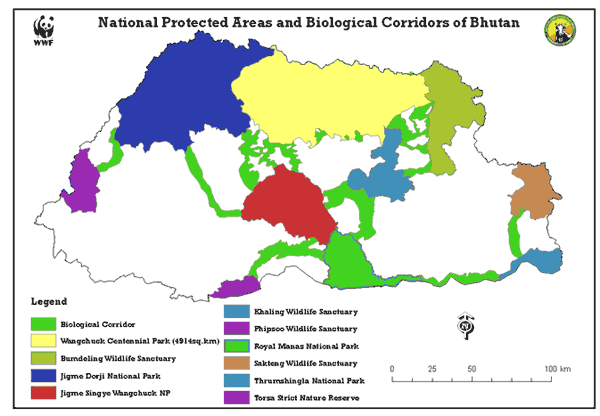Environment
The people of Bhutan have always treasured their natural environment and have lived in harmony with its elements, respecting the sanctity of life and revering the mountains, forests and rivers as abodes of gods and spirits. The predominant Buddhist faith has inculcated deeply in the people the value that all forms of sentient life, not just human life, are precious and sacred.
Almost three fourths of land area is covered by forests of temperate and sub-tropical species that are a natural habitat for a diversity of flora and fauna. Bhutan’s various eco-systems harbour some of the most exotic species of the eastern Himalayas and some of the richest bio-diversity in the world. Bhutan falls within one of the 34 designated global bio-diversity hotspots. It is a home to an estimated 200 species of mammals, 5,000 species of plants, 770 species of birds, 46 species of rhododendrons and many species of orchids (many endemic to this region).
Almost 51% of the country falls under the protected areas network comprising of 5 National Parks, 4 Wildlife sanctuaries, 1 Strict Nature Reserve and series of biological corridors connecting the protected areas. These areas harbour some of the rarest and most significant animals in the world like the tiger, snow leopard, clouded leopard, red panda, musk deer, asian elephant, golden langur, rufous necked hornbill, satyr tragopan, wards trogan. In addition to the protected areas there are many conservation areas declared by the government because of their biological / cultural / landscape significance. One of them being the Phobjikha Valley conservation area in Wangduephodrang the wintering grounds for the rare Blacknecked Crane.
Below is a map of the Protected Areas System of Bhutan





